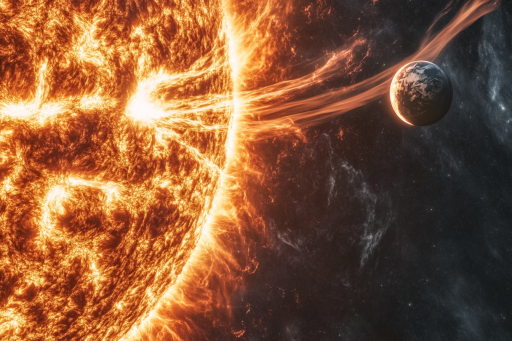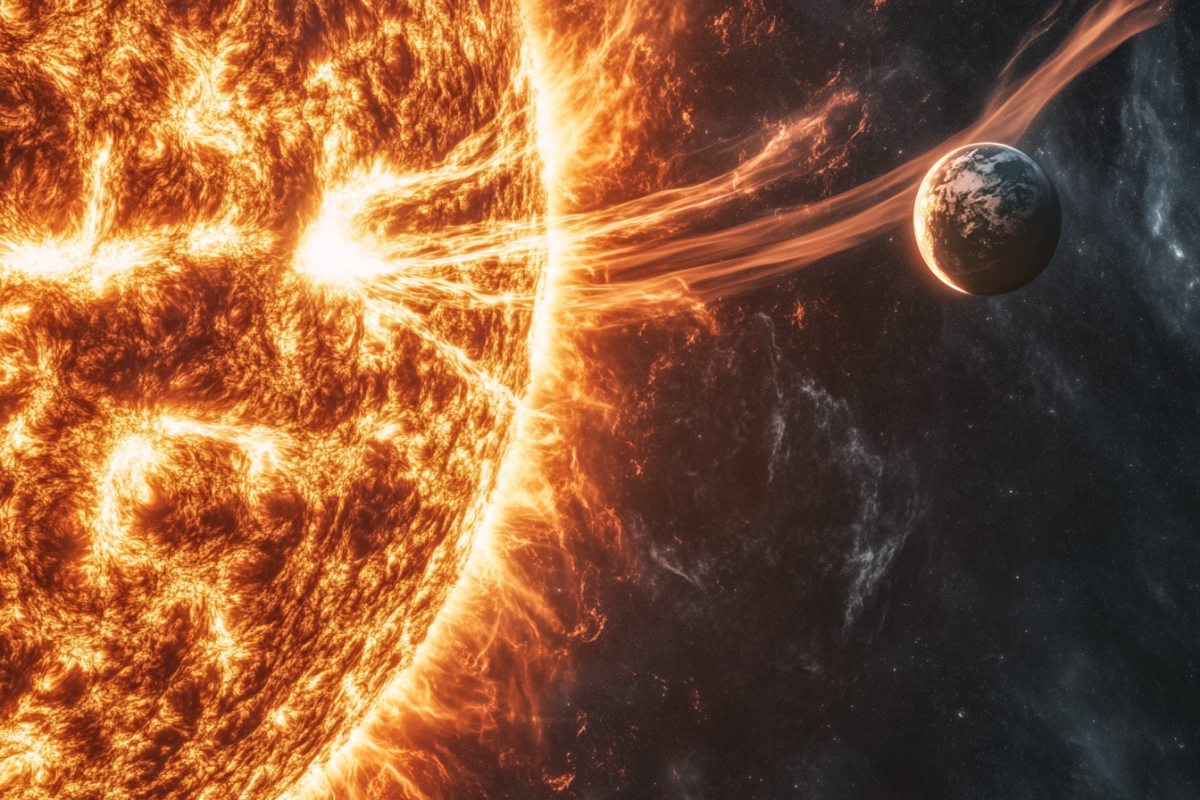
The Sun has been humanity’s greatest source of light, energy, and mystery for as long as we have existed. While it may seem like an old, familiar presence in the sky, scientists are constantly uncovering new and shocking truths about our star. From its strange behaviors to its hidden influences on Earth and beyond, recent discoveries challenge everything we thought we knew. What secrets is the Sun still keeping?
The Sun’s Atmosphere Is Hotter Than Its Surface

Logic would suggest that the Sun’s surface is its hottest layer, but strangely, the outer atmosphere—known as the corona—is millions of degrees hotter. This baffling mystery has led scientists to theorize that powerful magnetic waves or nanoflares may be responsible for the extreme heat. Understanding this phenomenon could unlock deeper insights into solar storms and their effects on Earth. Despite years of research, the exact cause remains one of the Sun’s most perplexing secrets.
It’s Not Actually Yellow

Though the Sun appears as a bright yellow sphere in the sky, its true color is white. The Earth’s atmosphere scatters blue and violet wavelengths, making the Sun appear warmer in hue. In space, astronauts see the Sun as a stark white ball of light. This discovery reshapes our understanding of how light interacts with our planet’s atmosphere.
The Sun Is Constantly Hurling Explosions Into Space

Giant eruptions known as coronal mass ejections (CMEs) release billions of tons of charged particles into space, capable of disrupting satellites and power grids on Earth. Recent discoveries show that these solar storms are more frequent and intense than previously thought. In extreme cases, they could trigger global blackouts and interfere with technology worldwide. Scientists are now racing to predict these cosmic outbursts before they strike.
There’s a Massive, Mysterious Hole in the Sun

Occasionally, dark patches known as coronal holes appear on the Sun’s surface, where the magnetic field opens up and releases high-speed solar wind. The largest of these holes can be hundreds of times the size of Earth, creating space weather disruptions across the solar system. These phenomena remain largely unpredictable, adding an element of chaos to the Sun’s otherwise structured behavior.
The Sun Sings—But We Can’t Hear It

If sound could travel through space, the Sun would be humming a constant, eerie song. Using advanced instruments, scientists have detected oscillations within the Sun’s plasma, creating low-frequency vibrations. These solar “songs” help researchers understand the inner workings of the Sun, much like seismic waves reveal information about Earth’s interior. This cosmic symphony, though silent to our ears, plays endlessly across the solar system.
A Hidden Solar “Heartbeat” Was Just Discovered

Scientists have identified a mysterious 11-minute cycle in the Sun’s magnetic field that behaves like a heartbeat. This pulse-like fluctuation was previously unknown and may play a role in shaping solar activity. The discovery could revolutionize our ability to predict space weather and solar storms. What’s driving this unseen rhythm remains a cosmic puzzle.
The Sun Could Erase Earth’s Internet

A powerful solar storm could one day cripple global internet infrastructure by disrupting undersea cables and satellite communications. Researchers have found that our modern reliance on technology makes us more vulnerable than ever to a solar catastrophe. A major event like the Carrington Event of 1859, if repeated today, could shut down communication networks worldwide. This looming threat has sparked urgent efforts to safeguard digital systems from the Sun’s unpredictable fury.
The Sun Is Slowly Peeling Away Our Atmosphere

Earth’s magnetic field protects us from most of the Sun’s harmful radiation, but scientists have discovered that solar wind is steadily stripping away our upper atmosphere. Over time, this could change climate patterns and even alter the planet’s long-term habitability. Mars, once covered in oceans, lost its atmosphere in a similar way, leaving behind the barren world we see today. Understanding this process is crucial for protecting Earth’s future.
The Sun’s Magnetic Poles Flip Every 11 Years

Unlike Earth, which experiences pole reversals over thousands of years, the Sun completely flips its magnetic poles every solar cycle. This process affects everything from sunspot activity to space weather, with ripple effects across the solar system. The more scientists study these reversals, the more they realize how deeply connected the Sun’s magnetic field is to space weather and planetary conditions.
There’s a Strange “Wall” at the Edge of the Solar System

The Sun emits a bubble of charged particles known as the heliosphere, which extends far beyond Pluto. Recent data suggests there’s a “hydrogen wall” at the boundary, where interstellar space begins. This invisible barrier, detected by NASA’s Voyager probes, represents the true edge of the Sun’s influence. What lies beyond remains one of the most mysterious frontiers of space exploration.
The Sun Has “Superflares” That Could Wipe Out Technology

While solar flares are common, researchers now believe the Sun is capable of producing “superflares” thousands of times more powerful than anything previously observed. Evidence suggests that younger stars produce these catastrophic eruptions, and the Sun might still have the potential for such an event. If a superflare were to strike Earth, it could devastate power grids and electronic systems worldwide. Scientists are monitoring the Sun closely to detect warning signs of such an event.
A Second Sun Might Have Existed

Astronomers have long suspected that the Sun may have once had a twin—an ancient companion star that was either ejected from the solar system or merged with the Sun itself. Some theories suggest this missing twin could explain odd gravitational anomalies in the solar system. If true, it could reshape our understanding of how the Sun formed and what influences it today.
The Sun’s Core Might Rotate at a Different Speed Than Its Surface

Recent studies suggest that the Sun’s core may be spinning at a different rate than its outer layers. By analyzing decades of solar vibrations, scientists found evidence that the core could be rotating nearly four times faster than the surface. This unexpected discovery challenges existing solar models and raises new questions about how the Sun’s internal dynamics influence its magnetic field and solar cycles. If confirmed, it could redefine our understanding of the Sun’s long-term behavior.
When the Sun Speaks, We Listen

Every new discovery about the Sun reveals that it is far more dynamic and unpredictable than we ever imagined. It controls the fate of our planet, influences space beyond our solar system, and might even hold secrets to events yet to come. As technology advances, scientists are uncovering more astonishing truths about our cosmic powerhouse. What other surprises does the Sun still have in store for us?





